High bounce rates can have a huge negative impact on your travel business.
But what is bounce rate? And how can you reduce it?
Bounce rate explained
Bounce rate is the percentage of visitors that leave a website after viewing a single page without taking any further actions (such as clicking through to another page of the site).
The average bounce rate for travel websites is 51% (source). It’s worth checking your bounce rate against this number to assess how you’re performing and whether you need to optimize your site.
Why can high bounce rate be a problem?
High bounce rate is usually a sign that your shoppers aren’t being met with a good customer experience, aren’t finding what they’re looking for, or simply aren’t interested in the services you have to offer.
However, there are a couple of instances where a high bounce rate might not be cause for alarm.
Information pages such as ‘contact us’ or FAQ pages may have high rates, as customers may have found the information they needed and consequently leave the site.
Or if you have a blog, for example a travel blog covering different destinations, visitors might read a post and go away to have a think about the information before coming back to make a purchase. Nearly half of UK holidaymakers spend longer researching and booking a vacation than the duration of the trip itself, so activity like this might not be surprising, but it’s still counted as a bounce.
In most cases though, a high bounce rate indicates that your site needs optimizing to improve the customer experience and encourage shoppers to keep browsing and make a purchase.
Keep reading for 4 ways to improve your bounce rate, with real-life examples from travel brands.
4 ways to reduce your site’s bounce rate
1) Build trust with social proof
Making a purchase online comes with an element of risk. You’re asking the shopper to part with their money in exchange for something they can’t see, touch or try out in person. And when it comes to purchasing a vacation online, the stakes are often very high.
If your shoppers have even a hint of doubt about your trustworthiness, you risk them bouncing before truly looking at your site. It’s therefore crucial to be clear and shine those trust signals like a lighthouse beacon on every page. This includes landing pages, homepages – everything.
A proven way to build trust is through social proof, i.e. the various ways marketers can increase conversions by reassuring customers that they are buying the right product. Here are two bounce rate-reducing social proof tactics to include on your website.
Ratings and reviews
Homepage
Cottages.com employs a trust-building tactic on their homepage, showcasing their high Reevoo rating alongside other impressive trust signals.
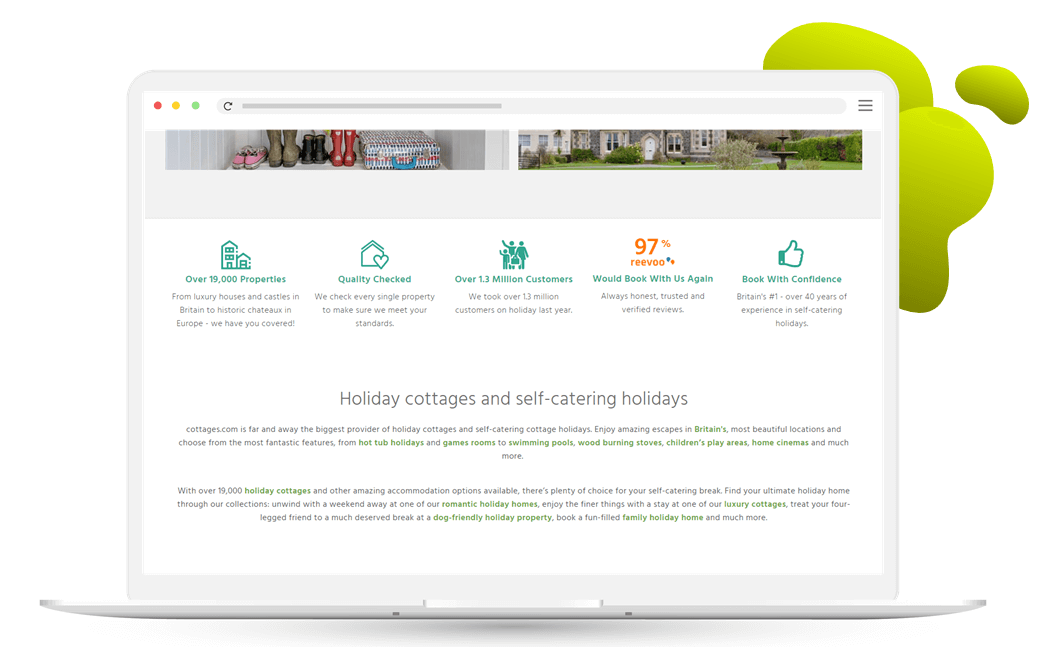
Source: Cottages.com
Product pages
If a shopper lands directly on one of your product pages, make sure you help them over the finish line rather than scare them away from your site. Almost 1 in 3 shoppers (30%) want to see product ratings and reviews, so it’s important to prominently display this trust signal on your product pages to reduce your bounce rate.
As with their homepage, Cottages.com adorns their product pages with the specific vacation property’s star rating to boost trust and reduce any purchase anxiety the shopper might have.
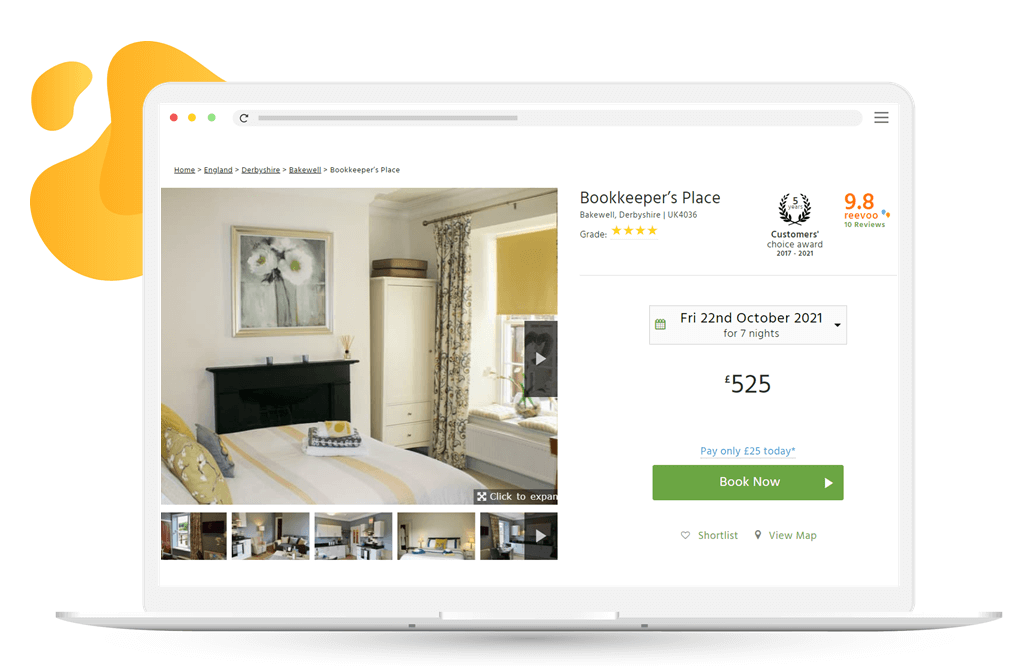
Source: Cottages.com
User-generated content
User-generated content (UGC) is marketing at its most authentic. It can include, for example, showing previous customers having the time of their lives in the villa in the Algarve to new customers eyeing a holiday there.
If shoppers aren’t given the opportunity to see these snapshots of services in the wild, they might be forced to leave your site and resume their search elsewhere.
Contiki brings their holiday packages to life with user-generated content, displaying travelers’ photos of the destination the shopper is currently browsing.
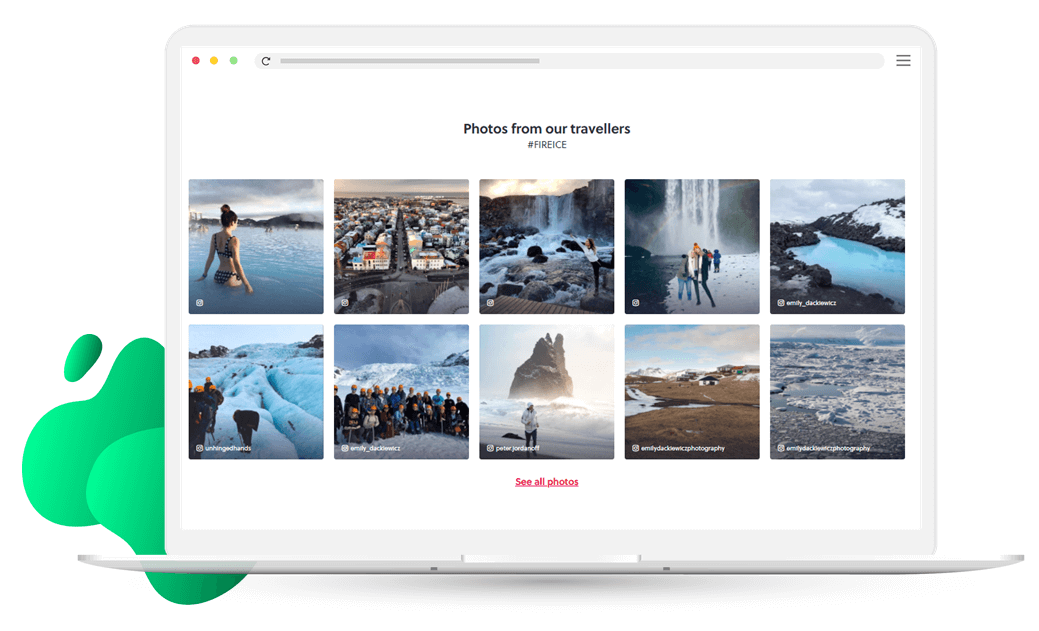
Source: contiki.com
2) Pique your travelers’ interest with product recommendations
Your travelers are busy people with places to go and competitor sites to browse. Make their lives easier by helping them find services and trips that will resonate with them, without having to waste precious time browsing through every inch of your store and thus lower your website’s bounce rate.
Personalized product recommendations are a great way to reduce your website page’s bounce rate – even when the traveler is new to your website. You can use contextual data such as location and local weather for geotargeting-based recommendations, as well as personification tools such as Fresh Relevance’s Price Affinity Predictor. The latter allows you to identify desired price ranges for new visitors who haven’t interacted with your website yet and display relevant recommendations using those insights.
For returning shoppers, you can use past purchase and browse data to personalize the product recommendations they see. Canopy & Stars displays similar vacation properties to the property the shopper is browsing, helping them find the perfect place for them.
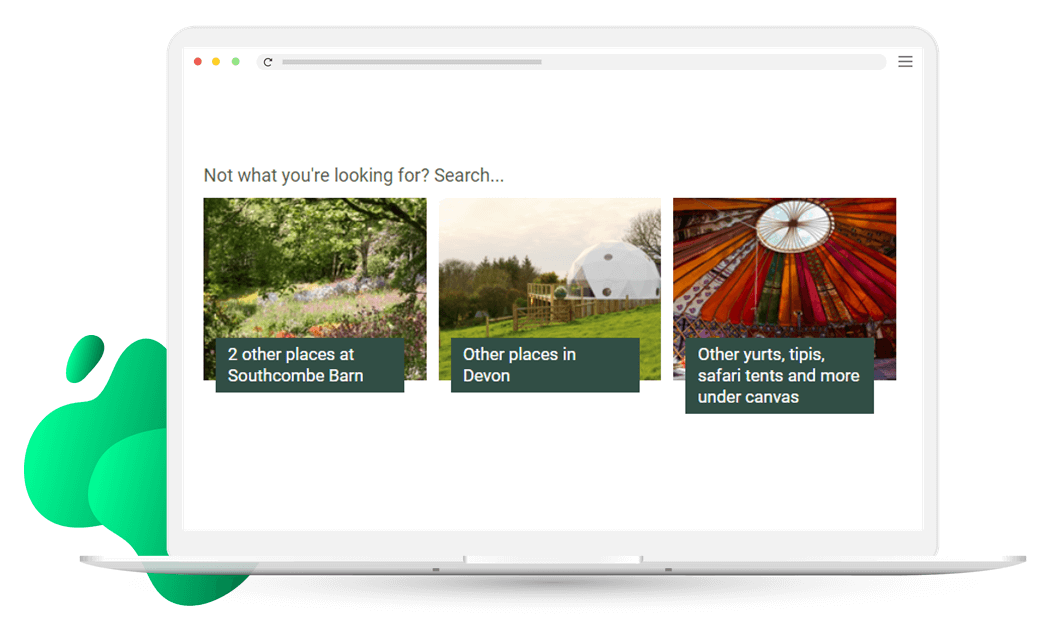
Source: canopyandstars.co.uk
3) Showcase your payment options on product pages
If your store offers multiple payment options, make sure you shout about this on your product pages. Some shoppers might be more comfortable paying with PayPal, or others might prefer to split the cost of their order with a tool like Klarna. Your job is to make it as easy and convenient as possible for consumers to purchase your goods or services.
Contiki boosts confidence by highlighting how much the shopper would need to pay now to reserve their spot, along with their no booking fees policy and part pay program.
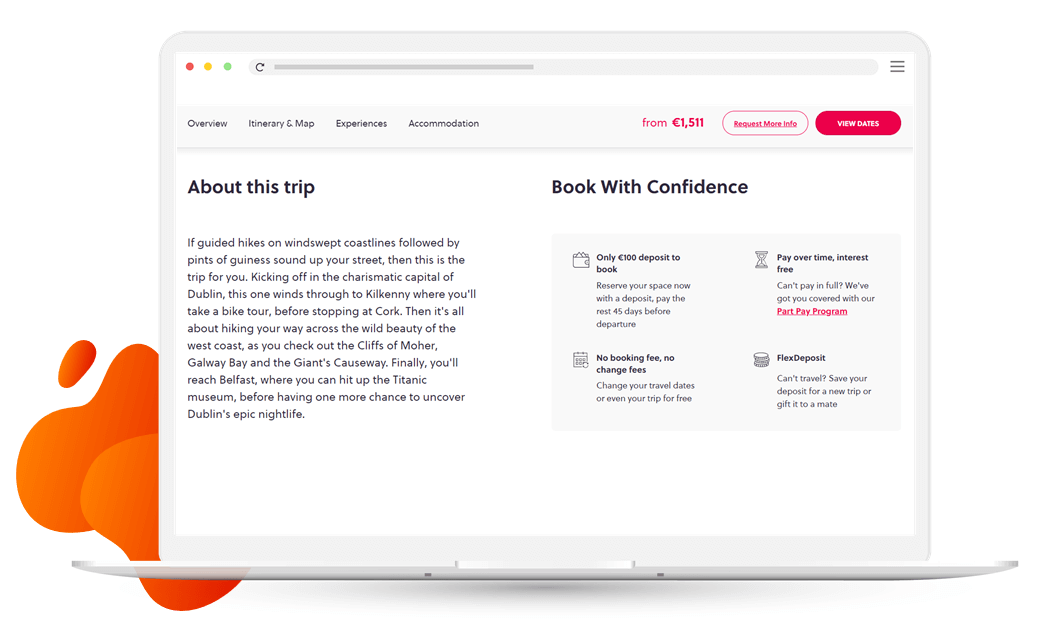
Source: contiki.com
4) Keep shoppers happy with fast page speed
We’ve all experienced it. That feeling of frustration when a website you’re keen to get stuck into takes forever to load.
Slow-loading pages can be a huge contributing factor to high bounce rates, causing impatient customers to click away to speedier sites.
Google has now implemented Core Web Vitals, which focuses on page experience, with page speed being a key performance indicator. This means that along with high bounce rates, your chances of being discovered via the search engine itself are lower when your website is slow.
It’s therefore crucial to test and monitor your site speed to help you improve the customer experience and reduce your bounce rates. Google’s PageSpeed Insights scores and compares your site’s performance on both mobile and desktop.
Final thoughts
If your bounce rate is above the industry average, you should consider optimizing your customer experience using the 4 tactics covered here.
Prove your trustworthiness to your customers with social proof through tactics such as ratings and UGC. Display product recommendations personalized to your individual travelers to help them find services and trips that are most likely to interest them and keep them loyal to your site. Give your travelers options and confidence when booking with you through payment options. Finally, make sure your website site speed is optimized so that travelers can find you via search and avoid them leaving due to slow loading speeds.
Get your hands on even more ways travel brands optimize the online booking journey for maximum conversions in our Ultimate Travel CRO Lookbook.






